Croakers: Family Sciaenidae
Species: Umbrina roncador (Jordan & Gilbert, 1882); from the Greek word umbra (shade, referring to its darkened, shady sides) and the Spanish word roncador (a snorer, or to snore). It is, afterall, a croaker.
Alternate Names: Surf fish, golden croaker, Catalina croaker, yellowtailed croaker and yellowfinned roncador. In Mexico they’re called berrugata aleta amarilla or verrugato de aleta amarilla.
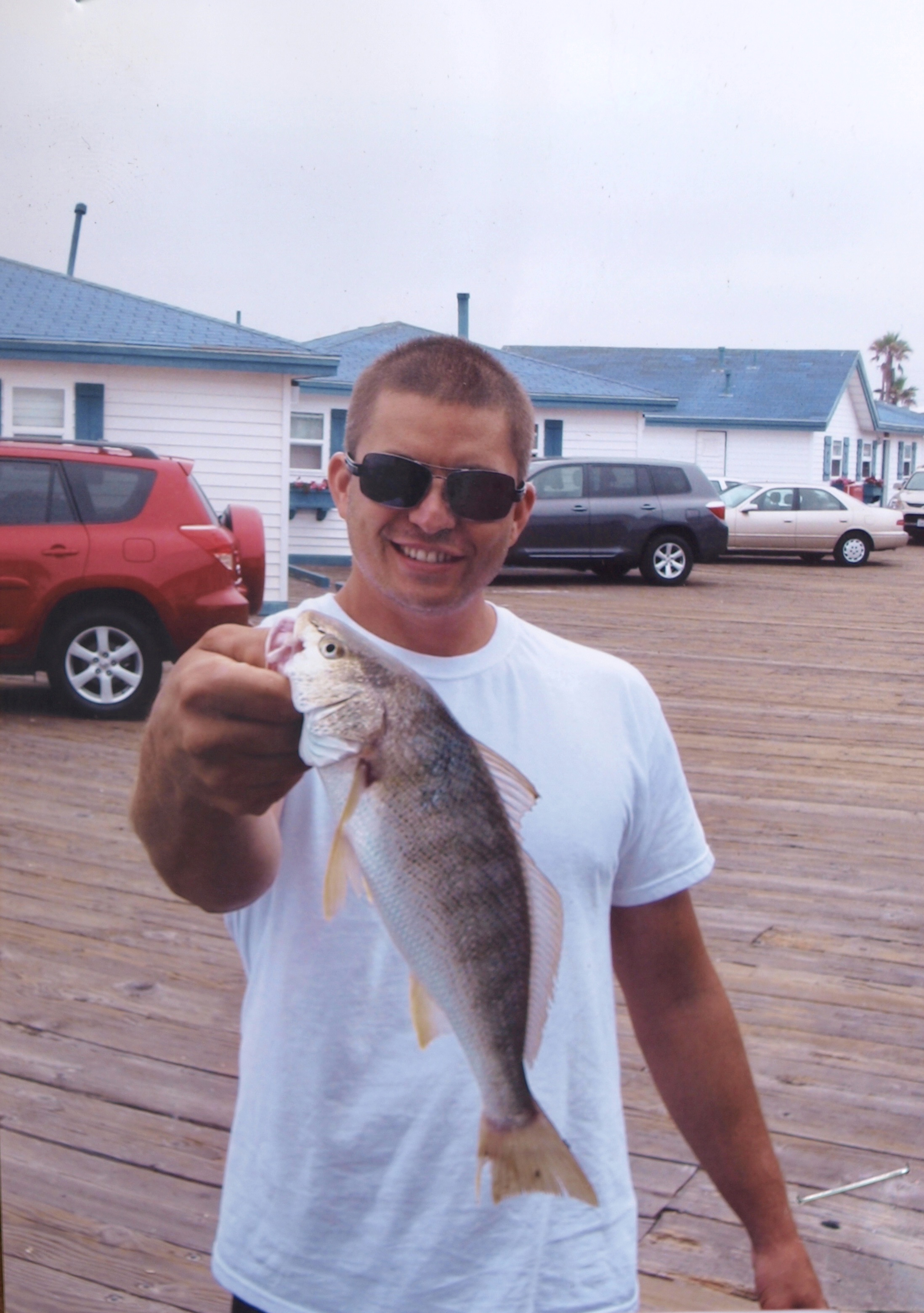
Yellowfin Croaker from Crystal Pier — 2010
Identification: Elongated, croaker-like body with a blunt, rounded snout and small subterminal mouth. Yellowfins have a large, fleshy barbel at the tip of the lower jaw that separates it from other croakers with the exception of corbina. Their coloring is a blue to grayish-tan on the back with brassy and golden reflections; silver overlaid with dark yellow-brown wavy lines on the sides and bright yellow or golden fins. The coloring blends in and renders them almost invisible against a sandy background.
Size: Listed as up to 21.9 inches (some sources say 22) and 3.9 to 4.5 pounds depending upon source. An 18-inch fish was reported to weigh 4.5 pounds. Most yellowfin croaker caught from piers are 10-14-inch fish. The California record fish weighed 3 lb 14 oz and was taken from the Santa Monica Beach in 2000. The IGFA World Record fish weighed 5 Lbs 8 oz and was taken at the East Cape, Mexico in 2001.
I almost undoubtedly caught a fish larger than that record fish without knowing it. It was caught on November 3, 2012 while fishing from a small dock in Cat Harbor (near Two Harbors on Catalina Island). It was one of many, many fish. All were returned to the water excepting the two largest yellowfin and a sargo. We were staying in a nearby camp where I cleaned and fillted the fish before putting them in Ziplock bags for the cooler. But, since it was such a good-sized yellowfin, I decided to measure it before cleaning. It was just short of 19 inches long, 18 7/8-inches to be exact. I knew it was a nice fish for the species but did not realize how nice until a couple of weeks later. While entering some fish data into my records, I noticed that the maximum size listed at the time for yellowfin croaker was 18 inches and about 4 pounds. That length was shorter than the fish I had caught. Given that I had not weighed the fish I’ll never know if my fish was larger than the record but its length leaves a nagging question mark in my head.
Range: Gulf of California and Bahia Magdalena, southern Baja California, to Point Conception, California. Common form southern California south. Reported from San Francisco in the 1800s but today it seems rarely seen north of Ventura.
Habitat: Generally found from the surf down to a depth of about sixty feet but most common in shallow-water, sandy areas, both oceanfront and in bays; recorded to a depth of 150 feet. At piers they are usually found from in or just past the breaking waves out to about the first third of most piers. Often found in medium to large schools so they tend to be aggressive feeders; if you catch one you will usually catch several. They tend to spawn in the summer, often mid-July to August, and sometimes just after spawing can see phenominal fishing (a fish or two every cast).
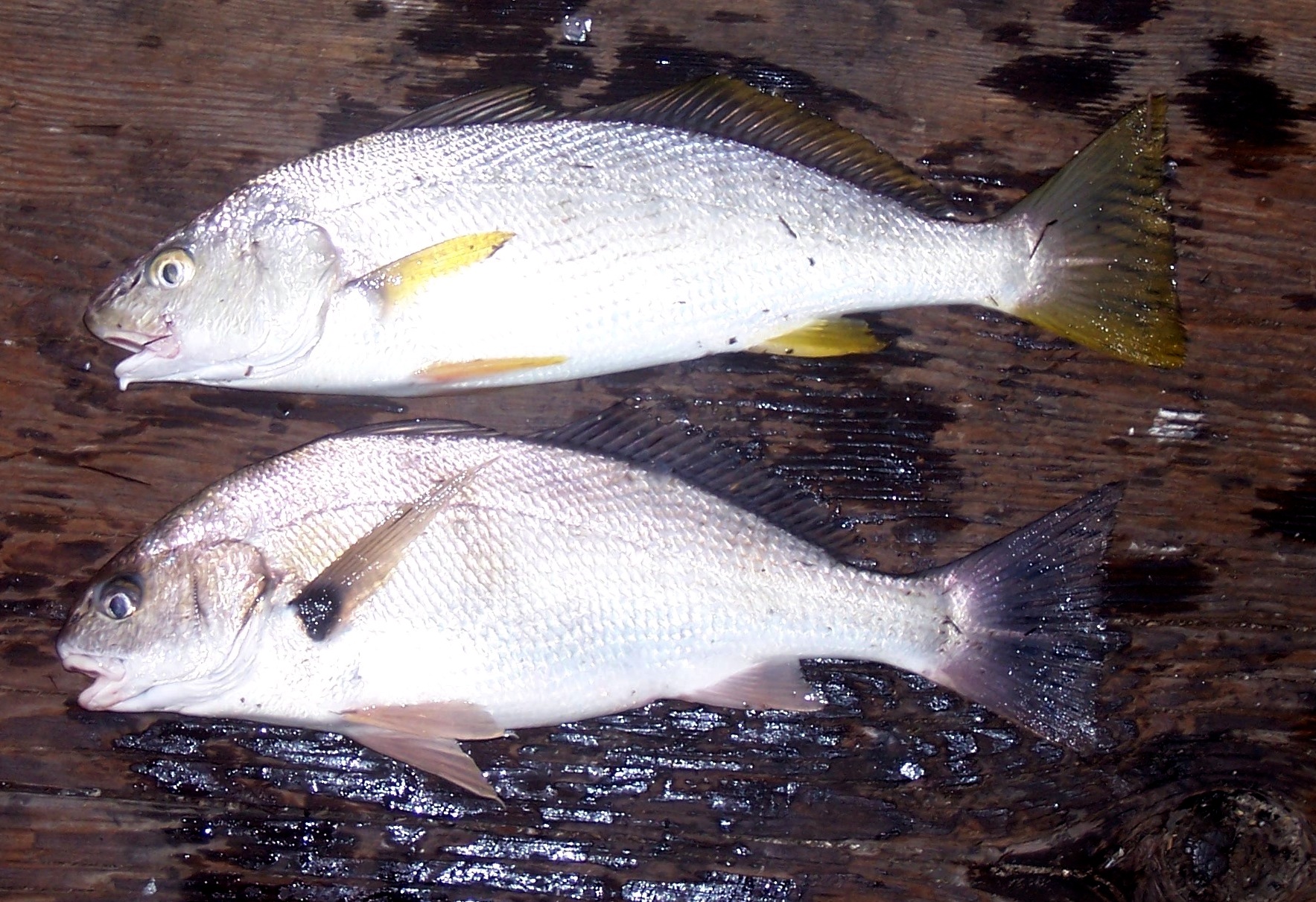
Yellowfin Croaker (top) & Spotfin Croaker (bottom)
Piers: Caught year round although the summer months, especially July and August, are considered the best months. Best bets: Crystal Pier, Oceanside Pier, San Clemente Pier, Huntington Beach Pier, Seal Beach Pier, Belmont Veterans Memorial Pier, Manhattan Beach Pier and Malibu Pier.
Shoreline: One of the main catches by sandy shore anglers in southern California.
Boats: A mainly inshore species although a few are taken by boaters fishing SoCal bays.
Bait and Tackle: Use light to medium tackle; high/low surf leaders with number 6 or 4 hooks, and be prepared for a quick, strong strike. Preferred bait includes fresh mussels, ghost shrimp, bloodworms and lugworms. Sand crabs can work well in surf areas while clams and innkeeper worms work well when fishing in bays. Yellowfin are a croaker that will sometimes hit artificial lures, generally shiny lures like small Kastmasters or Krocodiles.
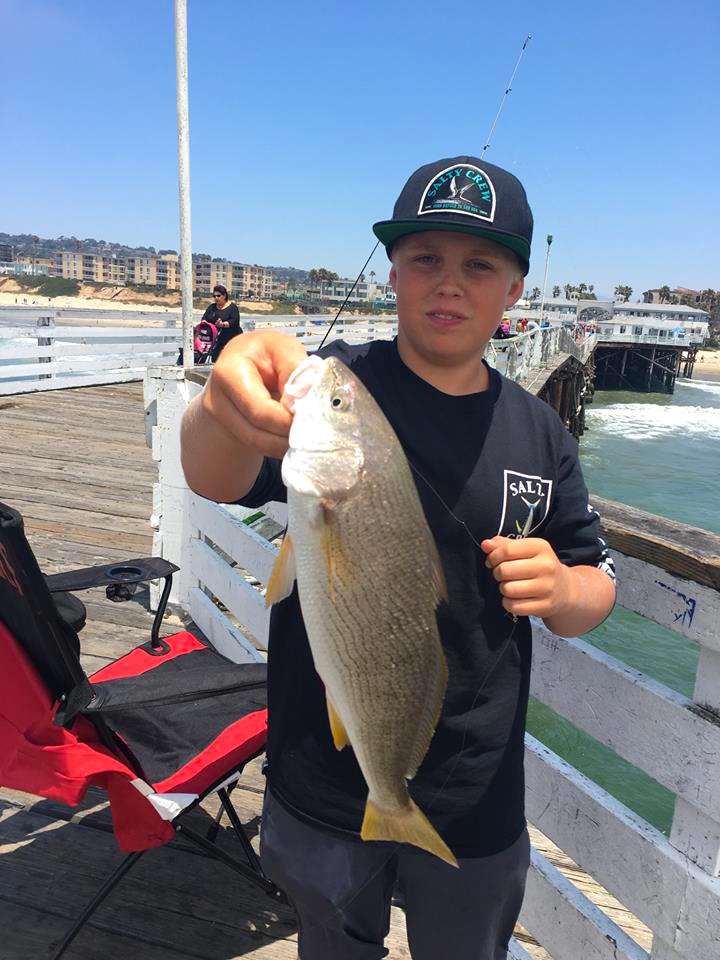
Yellowfin Croaker from Crystal Pier — 2017
Food Value: In the past this was considered a good, mild-flavored fish. They have small flakes, a soft texture, and low fat content. Today there are warnings in many areas against eating croaker. They are a bottom feeder and in polluted areas tend to accumulate toxins in their body (because of the bottom creatures they eat). If you do eat them, it is best to bake or broil them in such a manner that the fats in the flesh will drop away from the meat. They have been illegal to take in California with nets since 1909, or to buy or sell since 1915.
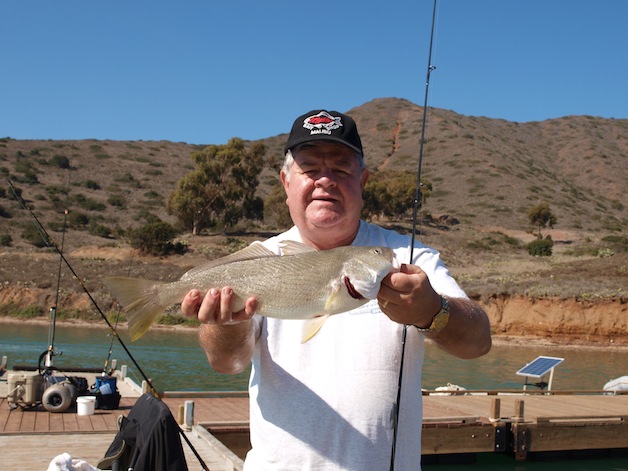
Yellowfin Croaker — KJ — Catalina Harbor
Comments: Yellowfin croaker are attractive fish that reach a decent size and put up a scrappy battle. By far, the best time to catch yellowfin croaker is around sundown and the early hours of the night. Of note is a study conducted on surf species by the Fish and Game Department between 2007-2009 in the Bolsa Chica to Hermosa Beach area. The study showed an increase in the number of yellowfin croaker from the 1990s and stated the yellowfin croaker were “much more abundant in the current study than in the 1950s.”
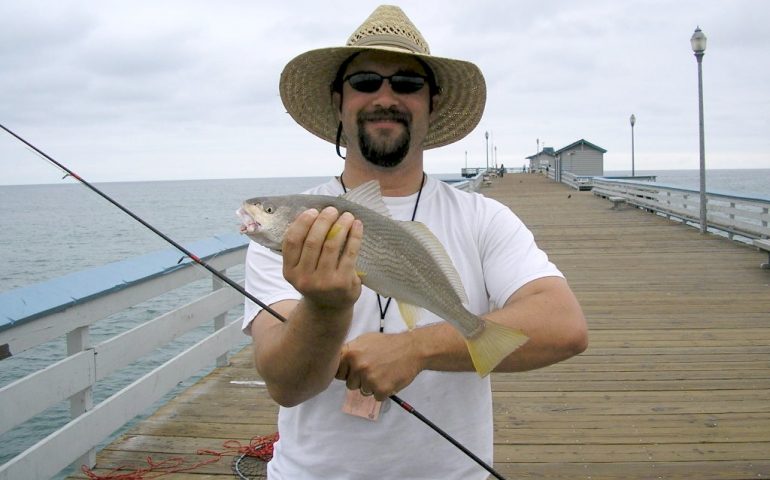
is yellowgin croaker is safe to eat now if its caught over in oxnard area port hueneme pier or ventura pier or in santa barbarra area.
You can eat them in all places. 2 servings a week (palm of your hand size) is the recommended intake. Above Santa Monica pier and below seal beach pier is safe
Is it safe to eat spotfin croaker?
They’re safe in most areas but all of the croakers are bottom feeders that like to eat the worms, clams and other organisms on the bottom and in some areas the mud is contaminated as are those organisms. It moves right up the food chain so in some areas croakers are not recommended for eating, especially white croaker (aka tomcod and kingfish). Most areas now have signs posted telling what fish should be eaten with caution.
These are my dad’s favorite fish. I always get one for him when I get the chance.
Are they still good to catch during the fall months?
Get the latest New York Jets TV channel, news, videos, rosters, stats, schedule and NY Jets Gameday ways to watch. Enjoy all NFL season matches of Jets Game in any device from anywhere in Ultra HD Streaming quality.For more info visit our site.